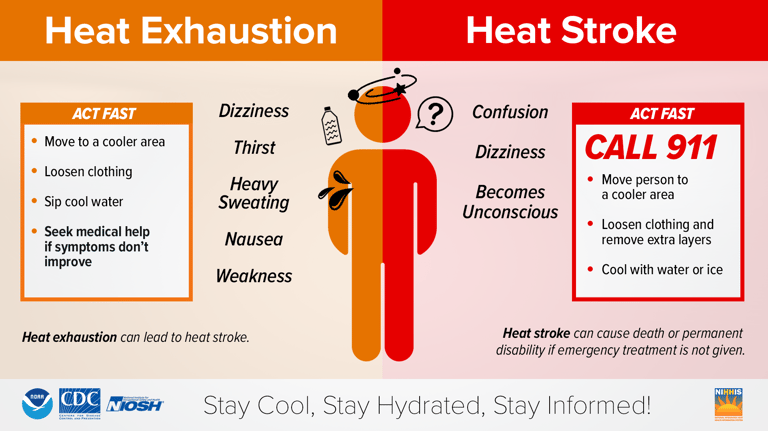Beekeeping in the Heat
Beekeeping is a rewarding endeavor, but it comes with its own set of challenges, especially during the hot summer months. High temperatures can pose significant risks not only to the bees but also to the beekeepers performing hive inspections. Here are five essential safety tips to help beekeepers stay safe while managing their hives in the heat.
Hydration is Key: Hydration should start hours before you plan to do inspections, drink plenty of water beforehand. Bring plenty of water to stay hydrated. Dehydration can sneak up quickly under the summer sun, especially when wearing protective gear. Consider using a hydration pack that allows for hands-free drinking.
Timing is Everything: Conduct hive inspections during the cooler parts of the day, such as early morning or late evening. This not only helps the beekeeper avoid the peak heat but also minimizes disruption to the bees, who are less active during these times.
Dress Appropriately: Wear light-colored, breathable clothing under the bee suit. Light colors reflect sunlight, and breathable fabrics help with air circulation, reducing the risk of overheating. Consider soaking your shirt and wringing it out, this will help keep you cool under the suit. Alternatively, you could do this with your suit.
Take Breaks: Schedule regular breaks to rest in the shade, remove the bee veil if safe, and cool down. Overexertion in the heat can lead to heatstroke, which is a serious medical emergency.
Monitor the Weather and Your Health: Keep an eye on the temperature and heat index. Be aware of the signs of heat-related illnesses, such as dizziness, headache, and nausea. If you feel unwell, stop the inspection and seek a cooler environment.
By following these tips, we can ensure their safety and the well-being of our hives during the summer months. Remember, the health of the beekeeper is just as important as the health of the bees. Stay cool and bee safe!
Beekeeping in the Heat: Staying Safe During Summer Hive Inspections


Be able to recognize the symptoms from Heat Exhaustion to Heat Stroke
Get in touch
Address
1010 Magnolia Bvld Suite K
Magnolia Tx, 77355
www.magnoliabeeandsupply.com
Magnolia, Texas 77355
Contacts
281-305-4072
info@magnoliabeeandsupply.com
magnoliabeeandsupply@gmail.com
Provide your email address below to stay informed of specials offers, other beekeeping related information
